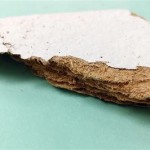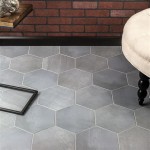Carpet Tile Sizes For A Perfect Flooring Solution
Carpet tiles, also known as carpet squares or modular carpets, offer a versatile and practical flooring solution for a variety of spaces, from commercial offices and retail environments to residential homes. Their modular nature allows for easy installation, replacement, and customization, making them a popular alternative to traditional broadloom carpets. A critical aspect of choosing carpet tiles is understanding the available sizes and how these dimensions impact the overall aesthetic, installation process, and functionality of a flooring project.
The selection of appropriate carpet tile sizes is paramount to achieving the intended design and performance characteristics of the flooring. Different sizes can create distinct patterns, affect the perception of space, and influence the ease of installation and maintenance. Furthermore, the choice of size can impact waste reduction and cost-effectiveness. Therefore, meticulous consideration of carpet tile dimensions is essential for a successful flooring project.
Standard Carpet Tile Sizes and Their Applications
While custom sizes are available, carpet tiles are typically manufactured in several standard sizes. These standard dimensions offer a balance between ease of handling, pattern flexibility, and cost-efficiency. Understanding these common sizes is a crucial first step in selecting the ideal carpet tile for a specific application.
The most common carpet tile size is 50cm x 50cm (approximately 19.7 inches x 19.7 inches). This size is widely popular due to its manageability and versatility. It is suitable for a wide range of applications, from small offices to large commercial spaces. The relatively small size facilitates intricate pattern designs and allows for easy replacement of individual tiles without affecting the entire floor.
Other standard sizes include 60cm x 60cm (approximately 23.6 inches x 23.6 inches), which offers a slightly larger format. This size is often preferred for creating a less busy and more modern aesthetic. The larger tiles can reduce the number of seams, resulting in a smoother and more seamless appearance. They are also generally quicker to install compared to smaller tiles, which can be beneficial for large-scale projects.
Another prevalent size is 25cm x 100cm, primarily designed to emulate the look of carpet planks. These rectangular tiles provide a linear visual element that can elongate a room or create directional patterns. They are particularly effective in hallways, corridors, and open-plan offices where a sense of movement and flow is desired.
Finally, there are also larger format tiles, such as 100cm x 100cm or even larger, though these are less common. These are frequently used in expansive commercial spaces to minimize seams and create a more monolithic appearance. However, they are typically heavier and more cumbersome to handle, requiring specialized installation techniques.
The selection of the appropriate standard size often depends on the specific design goals, the size of the room, and the complexity of the installation. Smaller tiles offer greater flexibility in pattern design, while larger tiles can provide a cleaner, more seamless look and faster installation.
Impact of Tile Size on Design and Aesthetics
The size of the carpet tile significantly influences the overall design and aesthetic of a space. The dimensions affect the perceived scale of the room, the visual texture of the flooring, and the ability to create specific patterns and designs. Thoughtful consideration of these factors can enhance the overall appeal and functionality of the space.
Smaller carpet tiles, such as the 50cm x 50cm size, offer greater flexibility in creating intricate patterns and designs. They allow for more complex color combinations, geometric arrangements, and custom motifs. This is particularly useful in spaces where a unique and personalized design is desired. The smaller size also makes it easier to replace individual tiles that are damaged or stained, preserving the overall integrity of the design.
Larger carpet tiles, on the other hand, tend to create a more seamless and unified look. The fewer seams result in a cleaner and more modern aesthetic. This is especially beneficial in large open spaces where the goal is to minimize visual clutter and create a sense of spaciousness. Larger tiles can also make a room appear larger than it actually is.
Carpet planks, such as the 25cm x 100cm size, introduce a linear element that can be used to create directional patterns and guide the eye through a space. This can be particularly useful in hallways and corridors, where the planks can be laid lengthwise to visually elongate the space. They can also be used in open-plan offices to define different zones and create a sense of flow.
Beyond the basic size, the installation pattern also contributes to the overall aesthetic. Common patterns include quarter-turn, monolithic, brick, and random. Each pattern creates a different visual effect and can be used to enhance the design of the flooring. The choice of pattern should be carefully considered in conjunction with the carpet tile size to achieve the desired aesthetic.
Ultimately, the selection of carpet tile size and pattern should be driven by the specific design goals of the project. It is important to consider the size and shape of the room, the desired visual texture, and the overall style of the space. By carefully considering these factors, it is possible to create a flooring solution that is both aesthetically pleasing and functionally appropriate.
Installation Considerations and Waste Reduction
The size of the carpet tile also has a significant impact on the installation process and the amount of waste generated. Different sizes require different installation techniques and can result in varying levels of waste. Proper planning and consideration of these factors can streamline the installation process and minimize material costs.
Smaller carpet tiles are generally easier to handle and install, especially in complex spaces with irregular shapes or obstacles. Their smaller size makes them more maneuverable and reduces the need for precise cuts. This can be particularly beneficial for DIY installations or projects with limited access.
Larger carpet tiles, while potentially leading to a faster installation overall, often require more careful handling and precise cutting. Their larger size can make them more difficult to maneuver in tight spaces, and any errors in cutting can result in significant waste. However, in large open spaces with minimal obstructions, larger tiles can significantly reduce installation time.
Carpet planks, due to their linear shape, can be more challenging to install in spaces with irregular angles or curves. They require careful planning and precise cuts to ensure a consistent and visually appealing result. However, they can also be used to great effect in creating unique and directional patterns.
Waste reduction is a crucial consideration in any flooring project. The amount of waste generated depends on the size of the carpet tile, the shape of the room, and the complexity of the installation pattern. Careful planning and layout can help minimize waste and reduce material costs.
One strategy for reducing waste is to choose a carpet tile size that is well-suited to the dimensions of the room. For example, in a square room, using a square carpet tile size can minimize the need for cutting and reduce waste. In irregularly shaped rooms, smaller tiles may be a better option, as they can be more easily cut and fitted around obstacles.
Another strategy is to carefully plan the layout before starting the installation. This involves measuring the room, calculating the number of tiles needed, and determining the optimal placement of the tiles to minimize cuts. Using a professional installer can also help reduce waste, as they have the experience and expertise to optimize the layout and minimize material loss.
Furthermore, consider the "drop match" of the carpet tile. Some tiles are designed to be installed with a specific pattern, which means that a certain amount of waste is inevitable. Choosing tiles with a minimal drop match can help reduce waste and save on material costs.
In conclusion, the size of the carpet tile significantly influences both the installation process and the amount of waste generated. By carefully considering these factors and planning the installation process accordingly, it is possible to streamline the installation, minimize waste, and reduce overall project costs.

Carpet Tiles Pros Cons Should You Buy

Carpet Tiles Pros Cons Should You Buy
Residential Carpet Tiles Flooring For Home Welspun

What Are Carpet Tiles When Should You Use Them

What Are Carpet Tiles When Should You Use Them

Everything You Need To Know About Carpet Tiles

Can You Put Floating Carpet Tiles Over Tile Or Concrete Ideas

Matte Carpet Tiles For High Traffic Areas Size 2x2 Feet At Rs 65 Sq Ft In Hyderabad

Everything You Need To Know About Carpet Tiles

Can You Install Carpet Over Tile Floor Land Omaha Lincoln
Related Posts








